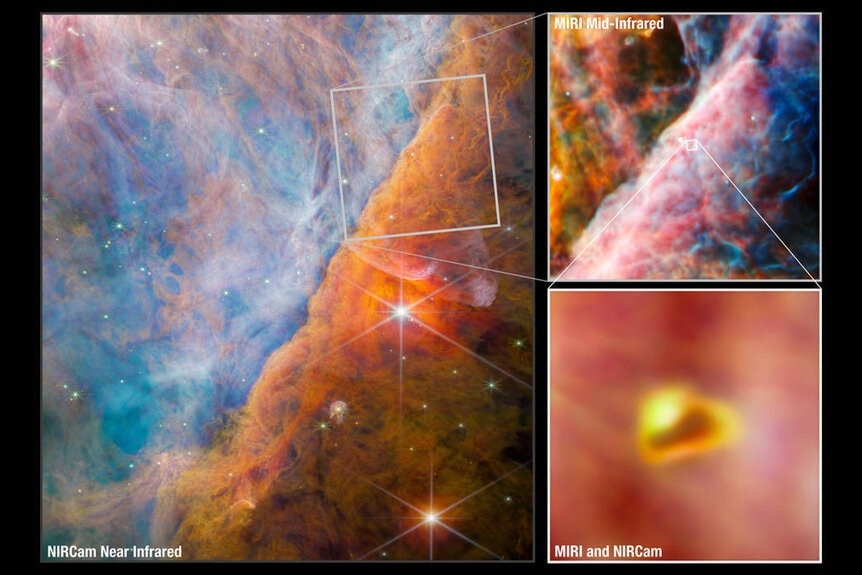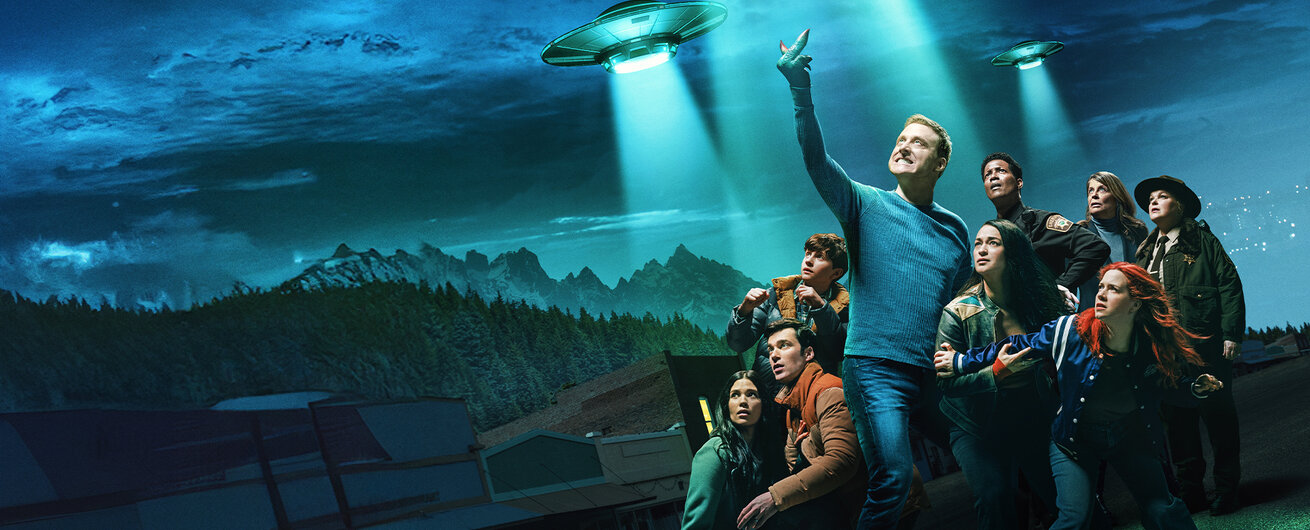Create a free profile to get unlimited access to exclusive videos, sweepstakes, and more!
JWST Discovers Organic Compounds in the Orion Nebula
We have alien ingredients, but no aliens... yet.
It isn’t the most ideal first contact scenario, but at least the aliens in SYFY's Resident Alien (streaming now on Peacock!) care enough to visit. As far as we can tell, our actual universe is startlingly vacant. There are trillions of stars with thousands of discovered exoplanets, and counting, but we haven’t found any concrete evidence that there’s anyone else out there. Without any crashed flying saucer or welcome message broadcast across the stars, astronomers must look for subtler signs of life in deep space, and they can do that by identifying the presence of crucial organic molecules and compounds.
Forty years ago, researchers suggested that some organic chemistry in the interstellar medium might be facilitated by methyl cation (pronounced cat-eye-on) (CH3+), but it had never actually been observed outside of our solar system. Now, an international team of astronomers using NASA’s James Webb Space Telescope (JWST) have confirmed the presence of CH3+ in a protoplanetary star system inside the Orion nebula. The findings were published in the journal Nature.
JWST Seeks Out Organic Compounds in Deep Space
In addition to the JWST’s incredible imaging sensors, it is also equipped with a spectrograph which allows it to measure the chemical composition of distant objects. Spectrographs work by looking for chemical fingerprints lingering in the light signature coming off an object. By looking at the emission lines in the light spectrum of a star, planet, or other cosmic object you can see which chemical compounds are present.
RELATED: 5,000th Exoplanet Found!
Researchers pointed the space-based observatory at a red dwarf star called d203-506, roughly 1,350 light-years from here. It’s a young star with a protoplanetary disk and it’s surrounded by a group of stellar siblings. While d203-506 is small, some of its neighbors are considerably more massive and they’re dumping huge amounts of ultraviolet (UV) radiation into nearby space.
Astronomers suggest that UV radiation might be the energy source allowing for the production of CH3+ and that it’s probably a common occurrence in most systems. Because most stars form inside stellar nurseries alongside a group of siblings, astronomers suggest that most star systems probably go through a period of intense UV radiation, facilitating the production of CH3+ and more complex downstream chemistry. On Earth, methyl cation is used in the formation of complex carbon-based molecules which form the basis of all life, as we know it.
“This clearly shows that ultraviolet radiation can completely change the chemistry of a protoplanetary disk. It might actually play a critical role in the early chemical stages of the origins of life,” said Olivier Berné, lead author of the study, in a statement.
It isn’t a smoking phaser for alien intelligence, but it is another piece of evidence that the universe might be more amenable to the emergence of life than we once thought. Which once again raises the question of why no one has invited us to the star party yet.
Practice for your future alien friendships with Resident Alien, streaming now on Peacock!



































